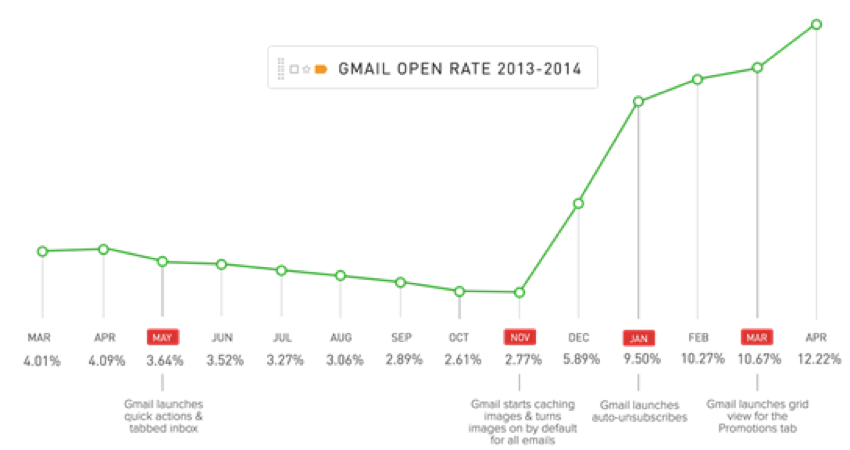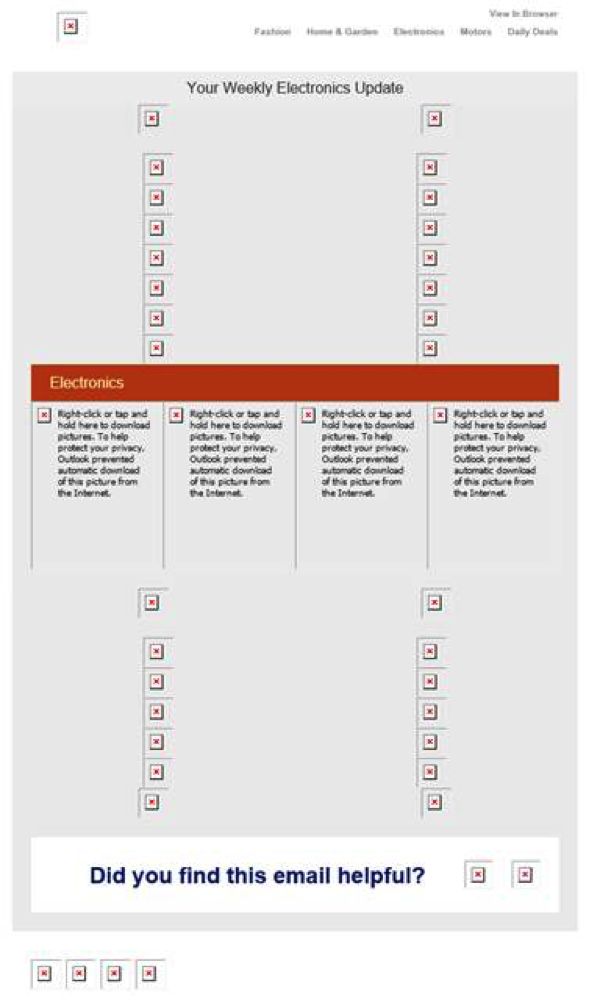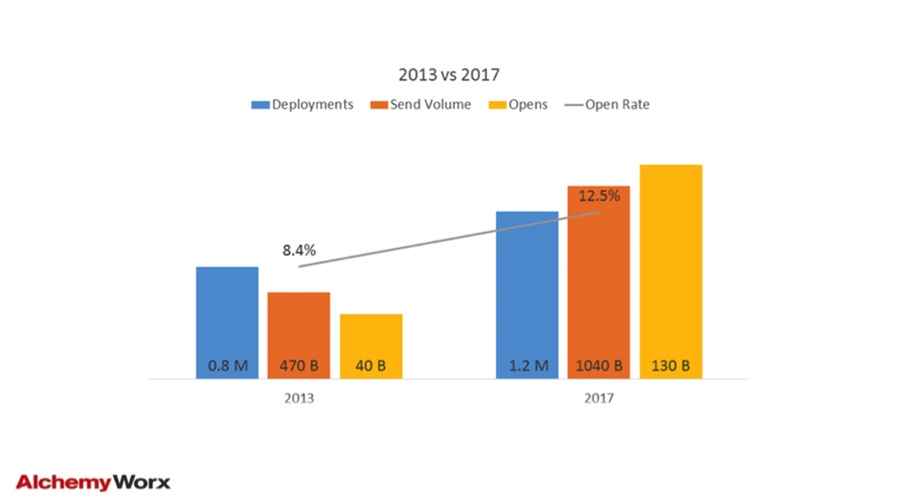OI Discussion: Forget Batch & Blast, it’s Fire & Forget Damaging Your Campaign Performance
Dela Quist: This week’s I’d like to open up a discussion around Batch & Blast something I wrote about last week for the OI bog titled: Forget Batch & Blast, it’s Fire & Forget Damaging Your Campaign Performance - Here’s Why
Most of you will have heard me point out that “more” email done properly increases engagement – without causing deliverability issue. The data I found using eDataSource seems to support my view. I have heard that some influencers think that’s BS and I would like to see where the rest of y’all stand.
I am looking forward to this because I think there are tremendous learnings here and will not take offense whatever you think of my view.
Tim Watson: Whilst the main point that DBS broadcast is doing OK, you may be optimistic on that open rate increase for a couple of reasons.
- Email clients open by default
- More image based emails (due to open time dynamic content)
How much of that open rate increase between 2013 and 2018 is due not to better email but images on by default?
Around the turn of 2013/2014 Gmail started downloading images be default and Litmus showed a huge increase in open rates. Not that more people were opening the email but most likely just more opens being measured.
This is the reported open rate increase Litmus report for Gmail. A huge reported open rate increase just due to default image load change:

On top of this it’s become more necessary for people to download images to see the email content.
Many eBay emails, in common with several brands, are totally meaningless without downloading images. Here’s an example:

This means the subscriber must download images to see anything about the message. With the side-effect of triggering open tracking.
As many eCommerce brands have moved to having open time dynamic content via linked images, this could also be causing more opens to be tracked.
One way or the other, I’d expect a key enabling driver of the stats you found has been automated relevant content at scale; Fresh Relevance, Moveable Ink, Kick Dynamic, LiveClicker and the many others.
Dela Quist: Thanks Tim Actually the main point is not that broadcast is doing OK, rather it is doing better than triggers automatons and tightly segmented campaigns have done. Whatever you say about the rise of mobile and the impact of images downloading automatically on "open" rates, you would have to agree that the error is constant and would therefore impact all emails (be they batch & blast or abandoned cart) in the same way. However the EDS data shows total opens for emails sent to <10% of the list were down 25% against 2013 as a percentage of all emails. However batch email campaigns sent to >25% generated 30% more opens as a percentage of all opens than 2013. That's HUGE difference and hard to attribute to false opens caused by mobile uptake and Gmail changes. The other interesting thing to note and something that may actually surprise some: Mobile opens appear to have peaked! According to Litmus In 2013, 51% of opens were on mobile http://bit.ly/2qLit13 In 2018, 46% of opens were on mobile http://bit.ly/2RyZLit18 Having made those arguments against mobile I want to remind you before anyone from eDataSource jumps in to point this out we used their platform to pull the results and they like Return Path report on reads and not opens for precisely that reason :-) Dela
Andrew Clark: In my opinion, it’s totally different for big brands like Amazon and Walmart to send more mail as opposed to smaller, less recognizable brands (there won’t be the same rate of spam complaints from the big recognized brands if done properly compared to smaller brands). When was the last time we complained about a transactional email from Amazon? Probably not because we know we are going to keep ordering from them for the foreseeable future (the same could be said for any of our favorite big brands).
Smaller brands would have to get extremely creative to be able to send more emails without causing their spam rates to go up or do it in a way that doesn’t bombard the customer and make them angry enough to complain on those extra emails.
The biggest issue the big Brands like Walmart and Amazon have is usually that they don’t send enough big drops (so much of their email is transactional or trigger based) so the IPs are not ready for the high volume when they do, which is why sending more frequently helps them out so much.
Tink Taylor: Hey Dela
I’ll chime in here as a long term supporter of your view.
I believe one of the issues here is when you say ‘send more email… with the caveat of ‘don’t do anything stupid’ the message is a little like stroking a cat for some and the initial gut reaction is to push back and not investigate it more.
As you word things below ‘more; email done properly increases engagement’… this drives us to discuss what you really mean!
When you actually sit down to try and achieve ‘more’ obviously no one really considers sending everything to everyone all day every day!
What this forces you to do is look at your content, look at your segments and automations so you send more email in aggregate… As you have pointed out more send in aggregate gives you higher opens, clicks, returns in aggregate over a given period of time… (Reach)
Forcing yourself to test cadence helps here… and by looking at the above you increase your relevance.. and at the end of the day relevance gets you results… do that and you avoid all those nasty deliverability issues as you will be driving engagements.
Pretty simple really!
Ryan Phelan: So, this should be fun. Would love to know the depth around this statement, Dela.
..."more" email done properly...
Can you help us define the "done properly"? At it's base, I think it's a given that the frequency of email is irrelevant if you're sending the right content.
So, is that what you mean?
Dela Quist: Can I help by defining the "done properly"? Yes I think so. Remember this is based on data (in the public domain) not my opinion. We looked at the activity AND ensuing results of email campaigns sent by the top 200 US mailers by send volume in the 2 years running up to 2013 and 2018. Brands like Apple, Amazon, Wells Fargo, Intuit, Expedia, Groupon, American Express, Astrology.com and Best Buy. Mostly B2C, but there is a healthy slug of B2B activity in there too. It is they: - Who sent 2.21 x more email than 2013 - Whose batch emails out performed their triggers and automations - Managed to do this without affecting inbox placement - improved Open Rates over the same period It is not hard to see what those guys are doing, I would be surprised if there was anyone on the list who did not get email from at least 10 of those brands, so not too hard to find out All I am saying is if they can we all can #DBS Do Be Smart! You may think its a given that the frequency of email is irrelevant if you're sending the right content, but the question on everyone's lips is less how many emails should I send, but rather whats the right content? This data gives us a huge sign post towards the answer Dela
Loren McDonald: Dela,
- Does EDS have click data? I would be more interested to see how cadence affects CTR, CTOR and total clicks as perhaps a better measure of both actual "engagement" (assuming that the goal of most of the emails sent from these brands have a conversion goal) and a proxy for revenue?
- Does not this debate we've been having for the last 10+ years partially come down to how you view the channel of email marketing?
- There isn't one right answer of course. As the wise old sage John Caldwell would say, "What is the LOE vs. ROI." Some companies can manage 100 behavior-based triggered emails that produce huge conversion rates and solid revenue from small volumes - and other teams struggle to get half a dozen up and running and working well.
But obviously, these metrics and conclusions have different meanings based on your business. If you are Walmart with both online and offline stores - an email in my inbox that I open (or don't open) and don't click on may be less significant because the branding of just seeing the email might be enough to remind me stop off at Walmart on the way home from work. If I'm online only, the branding affect is still present, but may or may not have the same impact???
Most (I think) view email marketing's roots as being in direct mail/database marketing ... and so if you view the channel through that lens, then segmentation, personalization, more targeting and relevant content are the primary operating principles.
But if you view email as a form of advertising - as Dela (Bob and others) always have, then "impressions" - measured through the proxy of opens is a key operating principle. The more (within reason and without causing too much churn and spam complaints) we touch (brand impression) a subscriber the more top of mind our brand will be and the more likely those customers will take the desired action we want - eventually.
I assume that a fair percent of email marketers view email as being in both camps ... the emphasis likely being the big difference.
Send more email - whether triggered off of behavior, automated, segmented or to your entire database ... just do it well (DBS), focus on your business's core goals and add value to the customer relationship.
Tim Watson: Hi Loren,
I don’t believe EDS has click or conversion data and it would certainly be much better than looking at opens.
Open rate is a terrible proxy for revenue, open reach is I believe better as a proxy. But I agree with you, given the chance using something other than a proxy would be better.
I don’t see principles of ‘segmentation, personalization, more targeting and relevant content’ are different to principles of ‘impressions’. You get to make more impressions (without causing too much churn and spam complaints) by doing a better job of content/relevancy – because that allows you to send more.
Brad Gurley: Tim, It sounds like you are espousing the alternative mantra of “Send better email.” I tend to lean that way as well but certainly have a bit of a bias as I am on the technical/compliance side of things. But like many on this list, I’ve been in email long enough to understand the business side and the interplay between the two. In my own experience, sending more email often works well for large, well-established brands. For the majority of senders without the notoriety and brand loyalty of, say, Apple, sending more volume without paying more attention to targeting and relevance, results are not consistently good. ‘Send more email’ is not the simple answer, nor is ‘Send better email.’ The simple answer is that there is no simple answer. Take the data that exists, sprinkle it with your own preferred amount of salt, and find out what works best for you via real-world testing and experimentation.
Tim Watson:
Hi Brad,
For sure there is no one answer, however I think it’s also somewhat of a mindset.
Take these two very different positions:
I’m going to make relevant emails using; automation, great content, broadcast, targeting, big data, profiling, testing, artificial intelligence... Because of this I’ll be intelligent and try to send the fewest emails possible.
I’m going to make relevant emails using; automation, great content, broadcast, targeting, big data, profiling, testing, artificial intelligence... Because of this I’ll be intelligent and try to send the most emails possible.
Brian Gruidl : We’re covering a lot of bases here. Let’s look at three buckets: Promotional, Transactional and Triggered emails. Each of these has a different purpose and cadence. The last two are driven absolutely by user engagement (or in some cases, triggered by lack of engagement), so let’s set those aside.
I get plenty of emails from Walmart, I think it’s sometimes 2x/day that are untargeted. Amazon is a special snowflake…just take a look at their preference center and try to figure out how to really manage how often they’re mailing you.
In our case, sending more email to customers that are engaged works when we a) have the content to support extra mailings, and b) that content either works as an overall driver (main categories) or we can target (smaller categories). There’s a saturation point that we consistently flirt with, and that’s where there’s more art involved .
For the smaller brands, I do think that more email is also helpful, but clearly can’t test. Breaking out engaged vs. non-engaged should be your first split…
Jaffer Ali: Open rates…click rates… These are proxies for the metrics for most (excepting brands who want to brand first).
What I care about is revenue and more importantly…profit. If you want to make more money, email more up to a point where the curve bends back on you. What I mean as you hit the wall of diminishing returns. It will be different for each company…at different times of the year. There is no great rule to latch on to that will work across the board. Disconcerting as the real answer is “nobody knows what will work best FOR YOU”.
Bob Frady: I've been on both the large and small/unknown sender side...and more email works. Here's why.
It's advertising. Advertising is built on successful repetition. We've tricked ourselves into doing calisthenics about the "value" of email...but - at the end of the day - it's an advertising impression. Just like TV, radio, and social. More repetitions = more dollars. While we can tie ourselves in knots about specialization, it's the new mass marketing. Except that this universe WANTS to see your messages - that's why they signed up and stay signed up.
I also think that personalization is vastly overrated when compared to the sheer mass that email can bring. But that's another story for another day.
Chris Marriott: Any discussion around "send more email" isn't complete without the added ingredient of email subscriber acquisition. Because you can blast your list until kingdom come, and you are still going to be sending fewer emails over time if you are not doing something to grow your list. And organic list growth through your site can rarely, if ever, keep up with list attrition. People are going to leave your list or silently unsubscribe (go inactive) for reasons that are largely out of your control. Sure you can over mail someone and drive an unsubscribe, but there are myriad other reasons someone leaves or starts to ignore you. So if you are not working to continually add new-to-file, engaged subscribers, everything else becomes nothing more than treading water.
Jaffer Ali: What is sorely missing from this discussion is cost. I get the idea that there are a lot of vendors on this list and discussing costs is not their favorite pastime. But unless someone has not noticed, we are nearing the “zero marginal cost” of deployment if one deploys oneself.
The sordid truth is that ESPs by and large suck..which is an entirely another thread. But what drives vendors is THEIR P&L not the marketers’ P&L. So they will tout all sorts of bells and whistles to jack up the cost…chief among these are TARGETED emails utilizing database solutions.
But the cost of “batch and blast” is nearing zero…and it is axiomatic that as costs decrease, targeting should decrease. The relevance crowd do not understand the power of delighting an audience and serendipity. I started my marketing career sending a catalog out…it cost about $1200/M to have our marketing message get into consumer hands. What is batch & blast costing? $.05/M?
Dela Quist: I’d like to start by (re)stating my objectives in writing the article to give some context to my responses to your comments. First and most importantly I am trying to provide an insight into the kind of things we look at here at Alchemy Worx/SellUp when we are looking for a strategic edge. So, if the vast majority of content marketing in the form of expertise has been saying “Batch & Blast” is dead long live Automated messaging for the last 5 years, that would seem to represent an opportunity to (re)discover something that everyone else is overlooking. That is not to say we aren’t experts building optimizing and maintaining triggers and automations – rather that we are expected to always be ahead of the curve in the way we think and develop strategy. Not just trot out what everyone else is saying and hide behind that aka best practice.
Secondly, I am a very big fan of data BIG data. Not the kind that requires a microscope to detect change, but the kind that you can see from 36,000 feet or preferably from outer space. Let’s say all the experts had been saying the forest was increasing for the last 20 years by using close up shots of a couple of growing trees, I am sure you would be very interested to see a picture of the Amazon Rain Forest taken from space in 2013 and show you the same view taken in 2018 and the total tree cover had shrunk by 50% you would be hard pressed to argue that deforestation was not happening. The reverse is also true.
For what it’s worth the vast majority of “evidence” of the power of automations are similar to this one - we had a client or did one A/B test in 2013 in which the trigger beat the blast in terms of opens and conversions by 70%, turned it into a White Paper and have not checked since. Worse still everyone else also quotes this single thread of proof until it becomes “the truth.” By contrast NO ONE even those who could because they have the data - most large ESP’s or anyone in deliverability for example. Which is why I decided to look. The EDS numbers allowed me access to large amounts of data that is in the public domain (so you can do this analysis yourselves if you wanted). Lo and behold when I looked the changes in email volumes and frequency I saw some very big changes indeed that are worth bearing in mind when you put together your 2019 strategy. That’s all I am suggesting Y’all do.
Thirdly, I generally know I am onto something when experts say do this one thing and the market – marketers - ignore that advice and do the opposite. We’re all familiar with the basic methods for improving email open rates, the most popular or easiest of which is to contact people who are likely to open emails. That’s what triggers and automations do! Abandoned cart, Happy Birthday, Lifecycle streams basically send an email to someone you are almost certain will open. The problem with this is that it cannot be a standalone strategy. It will improve your open rate, but WILL not increase the total volume of emails opened. For more, read very insightful article “How to Increase Email Open Rate with Decision Trees” by Jim Griffin – it’s very technical, but there is some interesting stuff on the trade-off between Batch & Blast and automations for everyone. You don't need to understand the math.
Finally, I get the impression that some folks just skim read the article, so I would like to pull out a few points that I consider to be the most important here.

- These changes are very significant, they are so large it would be hard to argue that they were caused by problems with the way the data is compiled or an increase in false positives for opens caused by the rise of mobile.
- I give an insight into what tactics we need to use in order to increase mailing volumes sustainably. What’s not to like about that?
- Generally tend to treat triggers and automations as fire and forget and therefore they tend to stay the same for long periods. Everything goes stale after a while, your beloved abandoned cart template, the carefully tested subject line, offer and call to action. Even the timing of the trigger loses its impact after a while. Some brands have hundreds if not thousands of automations slowly going stale out of view
- By comparison we put a tremendous amount of effort into our mass mailings – we use tools like Persado and Touchstone to create and test Subject Lines, LiveClicker or Movable Ink to deliver highly personalized content in real time, eDataSource and MailCharts to keep an eye on the competition Litmus and Taxi for Email to build and to test. The list is endless. No wonder the performance of these emails has improved so much more than triggers in 5 years.
I suppose I could also have also said - Or give an insight into what tactics we need to use in order to DECREASE mailing volumes sustainably.
My final point was to advise you to lovingly Heap quality brand and non-offer driven messaging on your database and Reap the rewards of that activity via your triggers.

 How to resolve AdBlock issue?
How to resolve AdBlock issue?  Dela Quist, is CMO of Alchemy Worx, the largest email marketing agency. He is a highly
Dela Quist, is CMO of Alchemy Worx, the largest email marketing agency. He is a highly